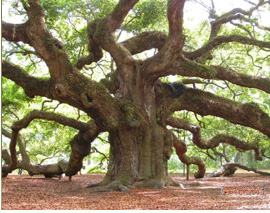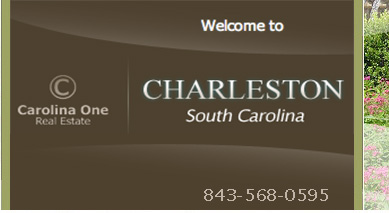 |
Fun Facts in Charleston, SC
HOME
DOWNTOWN CHARLESTON
MOUNT
PLEASANT SULLIVAN'S ISLAND
DANIEL ISLAND
JAMES ISLAND
WATERFRONT WEST ASHLEY BUYER QUESTIONS ASK AN AGENT
CHARLESTON MLS SEARCH
Facts about Charleston,
SC - Charleston Firsts, Top 5 Streets, Top 5 Events, Top 5 Historic Events and more...
Top 5 Charleston Firsts
1.) Charleston boasts the first public college, museum and
playhouse in the United States.
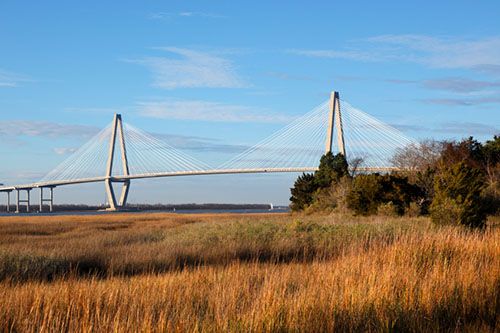
2.) George Gershwin composed his well known opera Porgy and
Bess while living on Folly Beach, South Carolina. Porgy and Bess are buried in the James Island Presbyterian Church graveyard.
3.) The first game of golf played in the United States took
place in Charleston, South Carolina.
4.) North America's longest cable-stayed bridge spans the
Charleston Harbor. The Arthur J. Ravenel Jr.
Bridge connects historic Charleston and Mount Pleasant, South
Carolina.
5.) The first shot to be fired in
the Civil War was fired by
Citadel Cadets stationed on Morris Island
Top 5 Streets in Charleston, SC
Legare Street It’s pronounced “luh-gree” and named for an 18th century merchant, and has some of the most magnificent houses, gates, and gardens as any thoroughfare in the historic city. Only four blocks in length, stretching North and South from Queen Street to South Battery, Legare Street is famous for such locations as the Sword Gate and Pineapple Gate houses, and boasts some of the most opulent detail from 18th and 19th century houses that have remained beautifully intact. There are grand examples of the side-hall single house style, which became popular for Charleston the expansive main floor ballrooms that open into each other with huge sliding doors. Draped with towering live oaks and magnolias, Legare street is a garden showcase, and the “parterre” garden at 14 Legare is stunning and easily visible from the sidewalk.
Broad Street Originally known as Cooper Street, the term Broad came from the widest of the city’s original passageways. 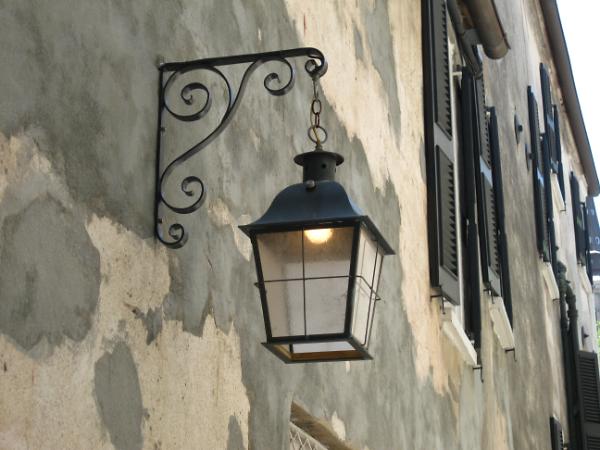 Traditionally a professional street with banks, law offices, art galleries, and shops, Broad Street also has distinguished residences. Two of these 18th century houses once owned by brothers John and Edward Rutledge, signers of the Constitution and Declaration, respectively, are now delightful inns. The famous “Four Corners of Law” at Broad and Meeting Streets display some of the grandest of the city’s famed structures, and a look down the facades of old Broad Street shows some of the most opulent detail work in the old city, from delicate iron balconies, to colorful stucco quions, handcrafted cornices and pilasters, graceful wood and stone cladding, and the prominent hip- roofed dormers on the impressive Mansard roof at the Confederate Home. Crowning this jewel of a thoroughfare from the east end facing down the street, is one of the most stunning of all, the Old Exchange, with its grand Palladian windows and rooftop cupola. Traditionally a professional street with banks, law offices, art galleries, and shops, Broad Street also has distinguished residences. Two of these 18th century houses once owned by brothers John and Edward Rutledge, signers of the Constitution and Declaration, respectively, are now delightful inns. The famous “Four Corners of Law” at Broad and Meeting Streets display some of the grandest of the city’s famed structures, and a look down the facades of old Broad Street shows some of the most opulent detail work in the old city, from delicate iron balconies, to colorful stucco quions, handcrafted cornices and pilasters, graceful wood and stone cladding, and the prominent hip- roofed dormers on the impressive Mansard roof at the Confederate Home. Crowning this jewel of a thoroughfare from the east end facing down the street, is one of the most stunning of all, the Old Exchange, with its grand Palladian windows and rooftop cupola.
Tradd Street Named for the first family to have child in the new colony, Tradd street is remarkably unchanged from the earliest days of Charleston, and boasts more 18th century houses than most cities in America. Tradd Street is the
?one street in all of Charleston that allows a view from the Ashley River to the west, all the way to the Cooper River in the east. Block after block of charming houses line Tradd, whose narrow width adds to the classic feel of long ago. There are an assortment of traditional colors and styles, but dominated by the famous single house, with its distinctive side piazza. It’s amazing to think that an angry mob once looted houses on Tradd during the infamous Stamp Act crisis in 1765, tearing away at structures that withstood that and many other man-made and natural assaults through the centuries to give the city such a quaint character today.
East Battery Street One of the shortest in the city, extending from the point of the peninsula to Water Street, where it 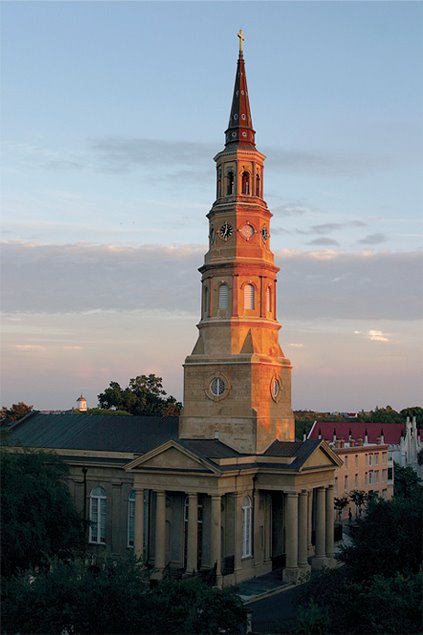 becomes East Bay Street. Most of the lots here were once marsh and mudflat, largely filled in during an 1830’s development project to build up this former wetland area. Many of those original houses still stand, including the fabulous Roper House, which boasts lion’s head earthquake plates, and still holds a piece of Civil War cannon barrel in its attic, from an explosion in 1865 that sent part of the cannon into the house. becomes East Bay Street. Most of the lots here were once marsh and mudflat, largely filled in during an 1830’s development project to build up this former wetland area. Many of those original houses still stand, including the fabulous Roper House, which boasts lion’s head earthquake plates, and still holds a piece of Civil War cannon barrel in its attic, from an explosion in 1865 that sent part of the cannon into the house.
The famous “Battery Row” is the most pictured location in all of Charleston, and although not as catchy a name as the famous “Rainbow Row” up a few blocks on East Bay, these houses are much grander. There’s the 1820’s Edmonston-Alston House, now a house museum, and the spectacular Porcher-Simonds House, an 1850’s design wonderfull remodeled with Victorian Renaissance Revival details that turns ever head that walks by. Off course the most pleasurable aspect of East Battery Street is the High Battery, an awe-inspiring raised sea wall and walking promenade that has attracted crowds since it was built in 1854.
Church Street Appropriately named for the statuesque edifice that dominates this thoroughfare, Church Street literally bends around St. Philip’s Episcopal Church in the charming French Quarter. In less than one block are some of the city’s most iconic structures in St. Philip’s, the French Huguenot Church and the Dock Street Theatre, all of which are open free to the public at certain times of year. Add to that is the intriguing three-part graveyard at St. Philip’s, which has a plethora of famous graves and fascinating stories to go along with them. Past the cobblestones and art galleries in the French Quarter, Church Street winds through South of Broad with a variety of elegant houses and gardens. One of the oldest and most captivating is the 1740‘s Eveleigh House at 39 Church, where the street bends with a surface still pave with old brick. On lower Church Street are some of the most florid gardens in Charleston, easily visible through open gates or wrought iron. The street terminates with the book-end beauty in the opulent Villa Margherita and William Washington houses, and a lovely entrance into the famous White Point Gardens at thetip of the old peninsula.
Top 5 Events in Charleston, SC...and one for good measure!
Spring Tour of Homes and Gardens This tour sponsored each year by the Historic Charleston Foundation is one of the 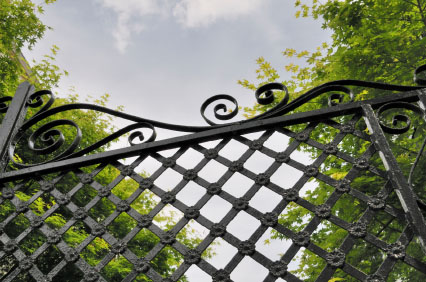 most consistently popular events in Charleston. During a four- week period in the city’s dazzling Spring blooming season, dozens of grand private homes and gardens are opened for public view. At each house, experienced and knowledgeable docents offer guests the most complete details of architectural styles, decor and history inside, as well as some fascinating revelations about the many interesting plants, trees and landscapes outside. This is the one of the few chances visitors will have to see inside these remarkable historic homes, and featured locations change yearly, but always highlight some of the most opulent locations from the colonial and antbellum eras. most consistently popular events in Charleston. During a four- week period in the city’s dazzling Spring blooming season, dozens of grand private homes and gardens are opened for public view. At each house, experienced and knowledgeable docents offer guests the most complete details of architectural styles, decor and history inside, as well as some fascinating revelations about the many interesting plants, trees and landscapes outside. This is the one of the few chances visitors will have to see inside these remarkable historic homes, and featured locations change yearly, but always highlight some of the most opulent locations from the colonial and antbellum eras.
Spoleto USA This 18-day arts and music festival attracts some of the world’s most outstanding new talent each Spring, as flower-laden Charleston becomes even more colorful with a rich mix of music, dance, theater, chorus, mime, opera, chamber music, and visual arts. The festival was begun in 1976 in cooperation with the town of Spoleto, Italy, where a similar festival is held each year, also showcasing world-class talent. A wide range of performances at numerous enchanting venues adds greatly to the appeal of the festival, with performances in local historic theaters, parks, churches and a grand finale at Middleton Plantation with a mesmerizing fireworks display over the Ashley River. Spring is a great time to be in Charleston, and Spoleto USA provides a seemingly endless opportunity to appreciate the artistic legacy of this great city.
Southeastern Wildlife Exposition The annual Wildlife Expo draws massive crowds each year, for a three-day indulgence in 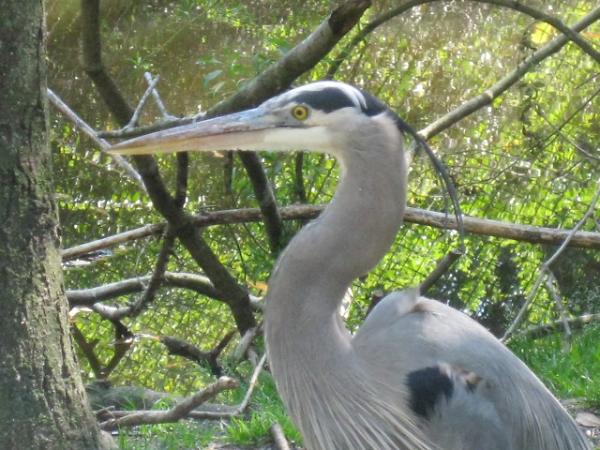 wildlife arts and events. With world-class artists, sculptors, carvers, and photographers displaying their craft in venues throughout the city, people can enjoy wildlife beautifully captured in every imaginable setting or pose. There are also many highlighted events involving rescued animals, such as the flying display from the South Carolina Birds of Prey Center, and various educational displays offered by Florida’s Busch
Gardens. In addition, there are the crowd-pleasing competitions for retrieving dogs, making sensational leaps in air and water after decoys. The expo features gala parties, family-friendly petting zoos and a variety of outdoor crafts displays, as well as city-wide venues of art and artists who are there to explain or autograph their marvelous creations. wildlife arts and events. With world-class artists, sculptors, carvers, and photographers displaying their craft in venues throughout the city, people can enjoy wildlife beautifully captured in every imaginable setting or pose. There are also many highlighted events involving rescued animals, such as the flying display from the South Carolina Birds of Prey Center, and various educational displays offered by Florida’s Busch
Gardens. In addition, there are the crowd-pleasing competitions for retrieving dogs, making sensational leaps in air and water after decoys. The expo features gala parties, family-friendly petting zoos and a variety of outdoor crafts displays, as well as city-wide venues of art and artists who are there to explain or autograph their marvelous creations.
Cooper River Bridge Run For more than three decades, distance runners from all over the world hav gathered in Charleston each Spring for one of the most challenging, yet exhilarating sporting events in the world. The Cooper River Bridge Run,and by the way, we Charlestonians pronounce it like “cooker”, is a 10k race from old Mount Pleasant over the 3-mile Arthur Ravenel, Jr. bridge, into historic downtown Charleston, which can be made either by running or walking. When the race was first begun in 1977, the route was across the old John Grace bridge, built in 1929, and had little in terms of space, but ad two separate 125-foot climbs to spans over the Cooper and Town Creek. Replaced by the grand cable-stay Ravenel bridge in 2003, the race now offers an expansive and mesmerizing panorama from atop a road bed more than 150 feet above passing ships and sailboats, and inside of two short climbs, just a single lengthy one. As might be expected, the challenge and camaraderie of the event draws more than 40,000 runners and walkers yearly, including some the best distance runners from all over the world.
Charleston Christmas For simple fun and pageantry, it’s hard to beat Christmas in Charleston. There is a grand parade down historic King Street that features marching bands, floats, Civil War reeanctors, dance groups, and horse teams. The route, lined by the cavernous historic buildings along King Street, is a crowd-pleasing delight, and is one of the most anticipated events of the year. There is an annual lighting of city trees in grand Marion Square and historic Colonial Lake that brightens the night sky, as well as festive decorations along fabled Broad Street that include lighting the rows of Palmetto trees. Christmas music resounds throughout the city with choral performances at various churches, and hand-wringing of historic steeple bells at St. Michael’s, Grace Church, and the Cathedral of St. Luke and St. Paul. At the city’s museum houses, historic doors, windows, rooms and hallways are festooned with classic decorations from the past.
Taste of Charleston Cool Fall days are perfect for outdoor gatherings in coast South Carolina, and one of the most enjoyable of all is the Taste of Charleston held at historic Boone Hall each October that attracts crowds in the thousands. Set among towering live oaks that overlook the scenic Wando River, the festival combines compelling food and drink with music and family enjoyment. Many of the renowned restaurants throughout the Charleston area put on a grand culinary display with tasty samplings of everything from oyster stew to fois gras. Wine and beer distributors offer a variety of their best as well, and families can wander the enchanting plantation setting to enjoy the hilarious “waiters race” as well as various live musical groups that add to the merry-making.
Top 5 Historic Events
Charles Town Founded 1670 Three small ships with 148 English man and women sailed into a grand harbor on the South Atlantic coast in April 1670, and established the settlement of Charles Town, named for British King Charles II. This would be the first lasting English colony in the South, and was a daring move in the face of hostile Spanish and French settlements in the region. Another daunting task was to make peace with local Indian tribes, such as the Cassoe and Kiawah, who greatly out-numbered the small band of setllers. Two settlers had died on the voyage, and others were sick and hungry when the first crude structures were fashioned from wood stakes and canvas sails along the banks of what would become the Ashley River. Fortunately for the settlers, the ground was fertile and the Indians friendly, and subsistence crops and Indian gifts of venison and corn helped the settlement survive. Within two years, the town was moved across the rive to the peninsula known as Oyster Point, and for a while, Charles Town was also known as Oyster Town. Within five years, the town’s population had quadrupled and the trade in animal furs and naval stores would turn the little community into a burgeoning seaport.
Battle of Sullivan's Island 1776
Within months of South Carolina’s declaration of independence from England, the British had organized a flotilla of ships poised to re-enter Charles Town harbor and end the Revolution in the South. Under th leadership of South Carolina militia commanders William Moultrie and Francis Marion, hundreds of soldiers were gathered on Sullivan’s Island to build a fort to protect the harbor. Fashioned from palmetto logs packed with sand, the little fortification known as “Sullivan’s Fort” had only 25 effective cannons to face a British squadron that showed up with nearly 300 cannon. Some American military leaders saw no hope and proposed abandoning the fort, but a last-minuted decision was made to stand and fight. On June 28, 1776, one of the most improbable victories in American military history was made possible by the soft logs and sand smothering most of the British cannonballs without harmful effect, and the British ships’ inability to navigate the shallow harbor entrance. The mighty English ships were badly beaten and withdrew, a week later the Declaration of Independence was
signed, and South Carolina was on its way to becoming part of a new nation, and after the war in 1783, Charles Town was renamed Charleston.
Firing on Fort Sumter 1861 Since the Revolution, the United States military had manned coastal fortifications in Charleston, designed to protect the harbor against attacks from the sea. In 1828, a spectacular new pentagon-shaped fort was begun on a shoal at the mouth of the harbor. Named for Revolutionary ware hero Thomas Sumter, the new fort took decades to build because legal disputed over the land it was built on, as well as logistical problems hauling materials and armament from all over the country to the isolated, island location. In December, 1860, Fort Sumter was still unfinished and unoccupied, and the local Federal garrison was still on Sullivan’s Island, stationed in Fort Moultrie, which had replaced Sullivan’s Fort after the Revolution. When South Carolina seceded from the Union on December 20th, state troops began seizing Federal installations and arms, and the commander at Fort Moultrie, Major Robert Anderson, decided to move his troops into the new Fort Sumter and lock themselves in.
For the next four months, the Southern government demanded that the Federals leave the fort, while the Northern government refused, and Abraham Lincoln forced the South’s hand by sending reinforcements in early April. Seeing Lincoln’s decision as an act of war, the Soutehrners responded by opening fire from surrounding fortifications on Sullivan’s, Morris and James islands for 34 consecutive hours. Although no Federal soldiers were killed in the bombardment, the fort powder magazine was ignited and threatened to consume all in the fort, so Maj. Anderson surrendered. Following the seizure of Fort Sumter, Lincoln called for 75,000 volunteers and planned an invasion of the South that led to the War Between the States.
Charleston Exposition 1901-02 Following the devastation of Charleston’s economy during the Civil War and in the military occupation for 12 years afterward, the old city was badly in need of some infusion of trade and capital to get it on its feet again. After Charlestonians saw the great success of “World Fairs” in Chicago, New York City and Philadelphia in the 1890’s, a similar event was planned in the hopes of bringing trade and notoriety to Charleston. The Interstate and West Indian Exposition opened in December, 1901, and was in session
until June, 1902. Vast areas of former parade ground and farmland along the Ashley River were transformed into a magical landscape of giant “palaces”, each highlighting various forms of regional commerce. There was a fascinating Midway, with itinerant performers and exhibits from the other World’s Fairs, as well as a dazzling night-time display featuring Thomas Edison and his new incandescent bulb. Among the notable visitors were Mark Twain, Edison, and President Theodore Roosevelt. And although the Exposition was not a financial success, it did help convince Roosevelt to push for a new Navy Yard in Charleston. It was that Navy connection and the servicing and building of ships that would eventually put Charleston on its feet again - all perhaps, because of Roosevelt’s visit.
Opening of the Cooper River Bridge 1929 Until 1929, vehicular commerce in Charleston was slow-paced and any trip North-South required a tedious ferry ride across the wide Cooper River. Life would change dramatically in many ways on August 8, 1929, when the 15,000 foot-long John P. Grace bridge was opened. The new bridge was a marvel of 20th century ingenuity, and until it was done, few thought it was possible. Having to span two ship channels at a crossing nearly 3 miles wide, construction took 18 months. Two towering cantilevered spans stretched 150 feet above the river channels, built on massive caissons that plunged into the hard marl more than 30 feet below the river bottom. Huge cranes on rails seemed to be suspended in mid-air as they helped workers hoist miles and tons of steel beams into place.
Once finished, the slow, old ferry and cargo boat system gave way to truck farming and direct connection to US routes 41 and 17 that tied Charleston to markets farther North. The old village of Mount Pleasant , once so isolated across the Cooper would eventually grow into one of the state’s largest cities, and Sullivan’s Island and the Isle of Palms would become some of the state’s most popular recreational areas. The old Grace bridge would become a new symbol of a resurgent city in 1978, with the initial Cooper River Bridge 10k run. Now the race is one of the top sport- running events in America, and even though the John P. Grace was replaced in 2003 by the current Arthur Ravenel Jr. Bridge, the old bridge and its impact on the Charleston area will never be forgotten.
Seven Wonders of
the Lowcountry - Scenic beauty and historic structures
chosen by readers of the Post and Courier
Johns Island -
Angel Oak: "This beloved old tree rivals any ancient tree
anywhere in the world. She has survived Hugo and many storms
before that, as well as the earthquake of 1886. He branches skim
the ground to welcome the generations of Lowcountry residents who
have admired her beauty." Maribeth Minschwaner.
Charleston lies on a fault line known as the Woodstock fault,
which geologists have determined was caused by a subterranean lava
"bloom" that cracked tectonic plates millions of years ago. The
adjusting layers caused a severe earthquake in Charleston on
August 31, 1886, destroying hundreds of homes throughout the city
and damaging many more. Because of the shaking effect that the
earthquake shocks had in knocking down walls in many homes,
thereafter a number of houses in the city were adorned with metal
rods passing through joists and connected by bolts on outer walls.
These earthquake bolts can be seen in the form of stars, crosses
or round plates on many older homes around Charleston.
Downtown Charleston
- The Battery: "The most visited and amazing part of the
lowcountry is The Battery. Each week 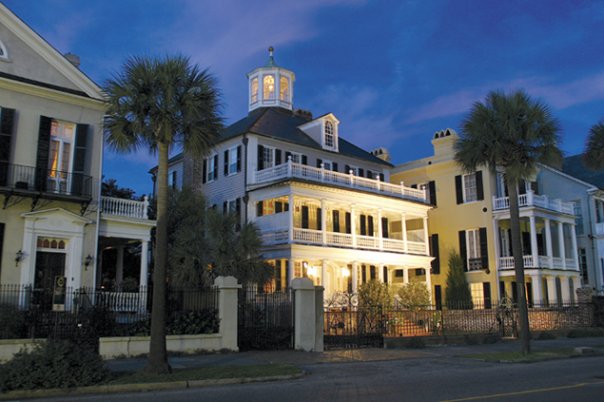 thousands of people
stroll, meander, jog and watch the seagulls, sailboats and the
sunsets. Horse-drawn carriages and tour buses jockey for
space to gawk at the magnificent views" Dee Pridgen thousands of people
stroll, meander, jog and watch the seagulls, sailboats and the
sunsets. Horse-drawn carriages and tour buses jockey for
space to gawk at the magnificent views" Dee Pridgen
Charleston - Mount
Pleasant: "The largest cable-stayed bridge in the Western
Hemisphere delivered under cost more timely than expected. The
view is magnificent. The pedestrian walkway is so great."
Jane Thornhill
Berkeley County -
Cypress
Gardens: "A living swamp that is open to the public"
Brenda
Charleston County -
Fort Sumter: "This fort, which required over 30 years to reach
approximately 90 percent completion, must rank as the most lengthy
construction process in the history of South Carolina. It
took eleven years to ship enough loads of granite to raise a
foundation to nine feet above sea level. In addition, Fort
Sumter earned an enduring place in our country's history as the
place where the Civil War began." Russell Horres Jr.
Banks of the Cooper
River - Mepkin Abbey: Walkers and bikers regularly enjoy the
entrance avenue of oaks...Mepkin Abbey is more than a place of
beauty and serenity and prayer; it is holy ground where heaven and
earth meet. Laura Ellen Truelove
Charleston area
Plantations: Middleton Place and Magnolia Gardens - because of
their immense beauty and incredible capacity to relax the spirit
and help unwind the stress. A canoe or paddle boat ride is
like traveling back into time. I confess to wondering just
what it must have been like in bygone days when travel back and
forth was by the waterways and how it must have been even more
beautiful then" Chaplain Bill Herrmann
Business
Charleston largest Private Sector Employees
Links to
Charleston anecdotes...
Architecture,
Mount Pleasant and
Summerville.
Do you know a fun fact about
Charleston that you would like to share? Please let us know Charleston Fun Facts email.
Search the
Charleston MLS
|

